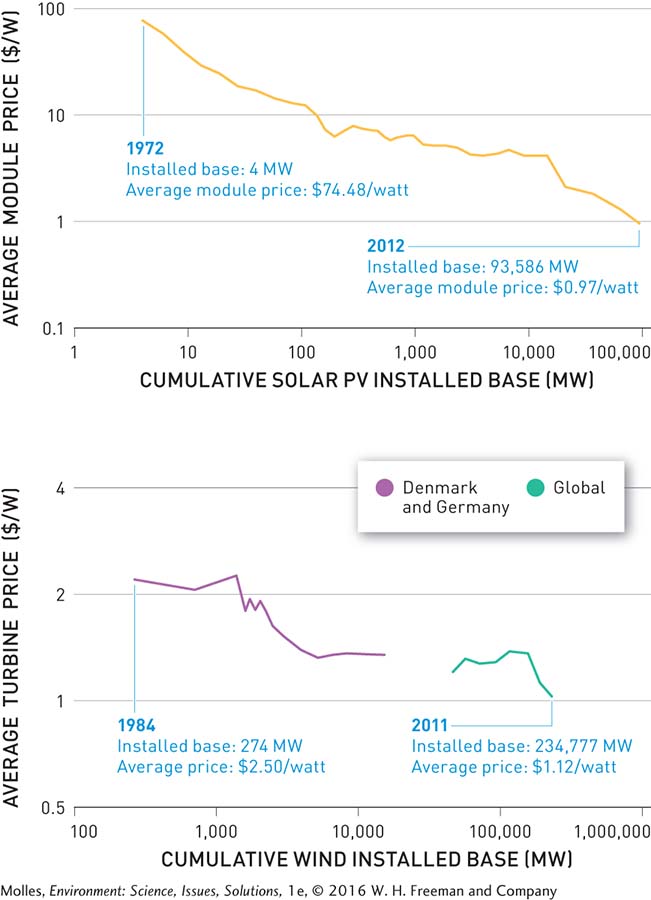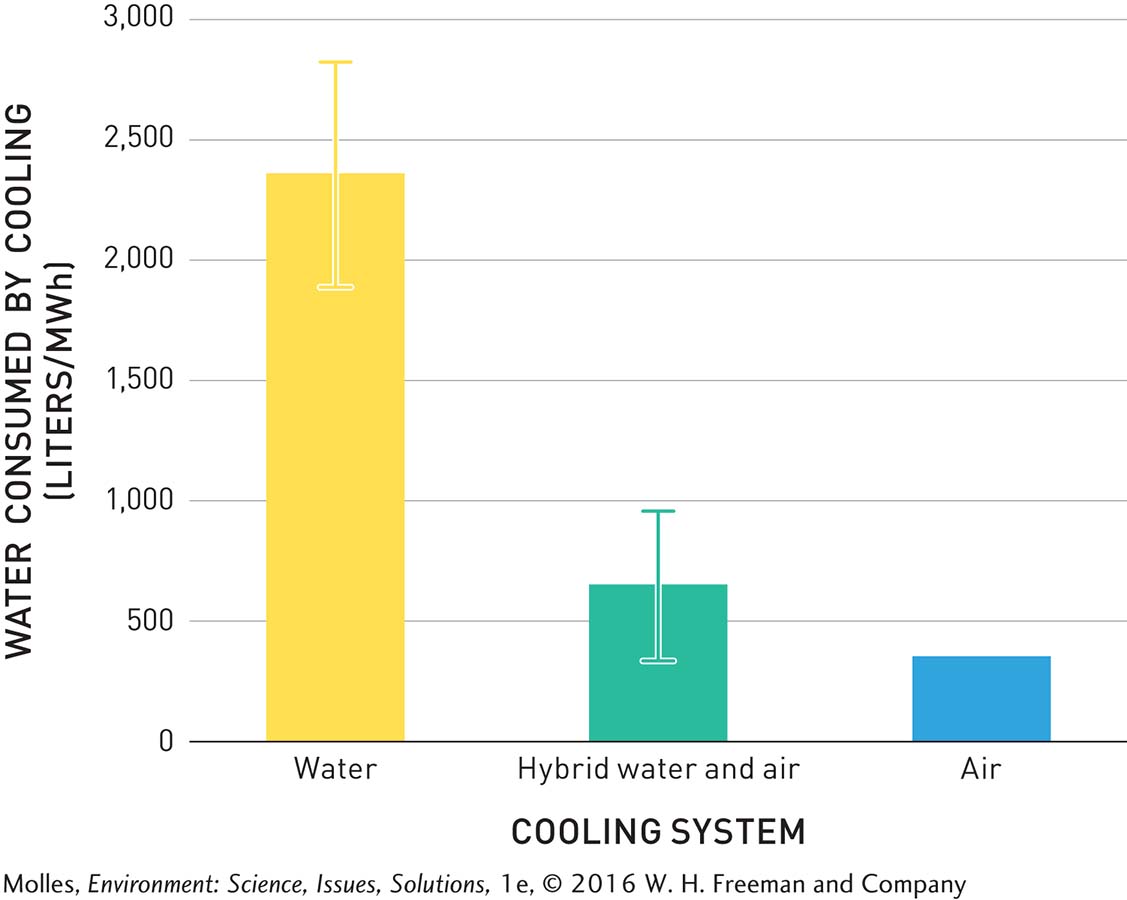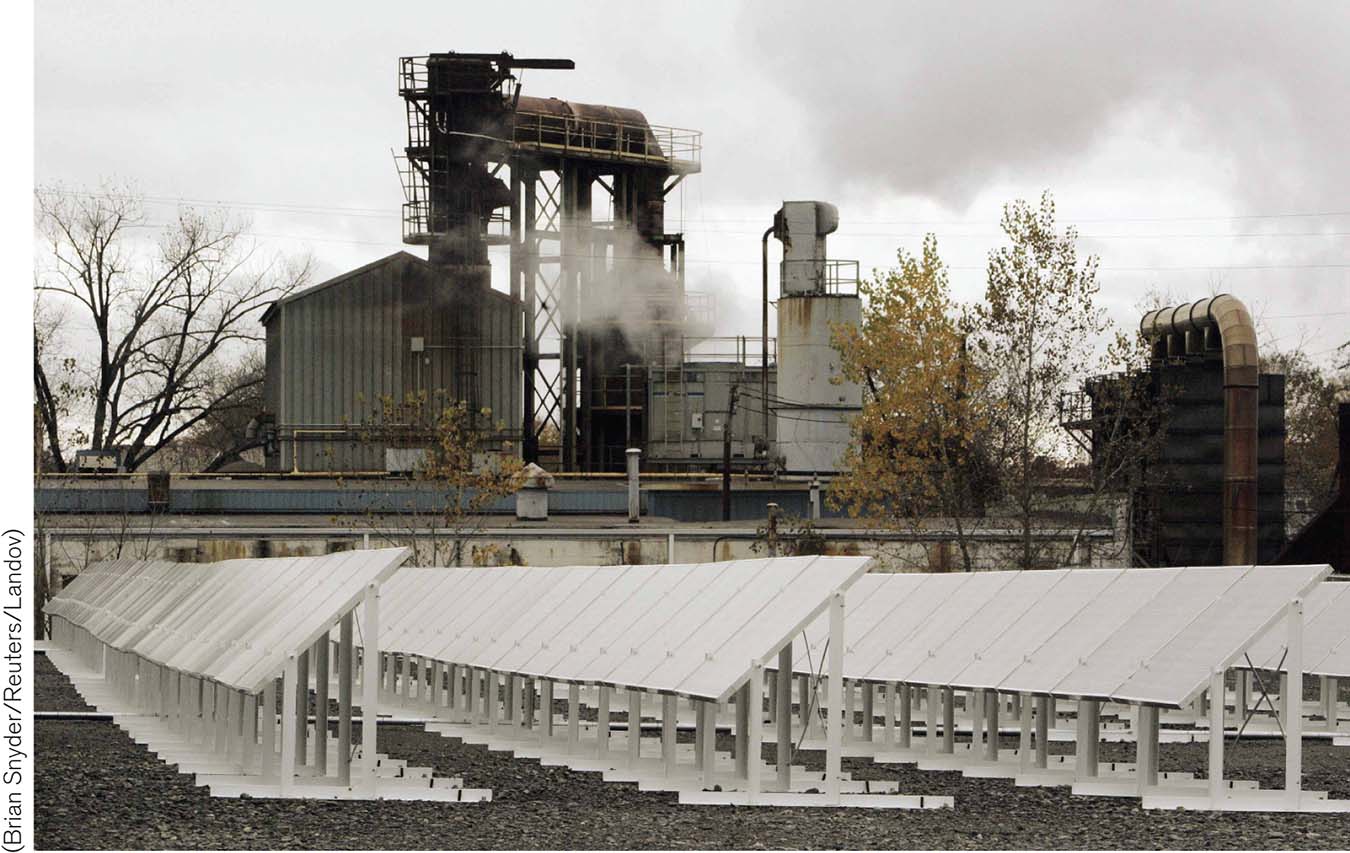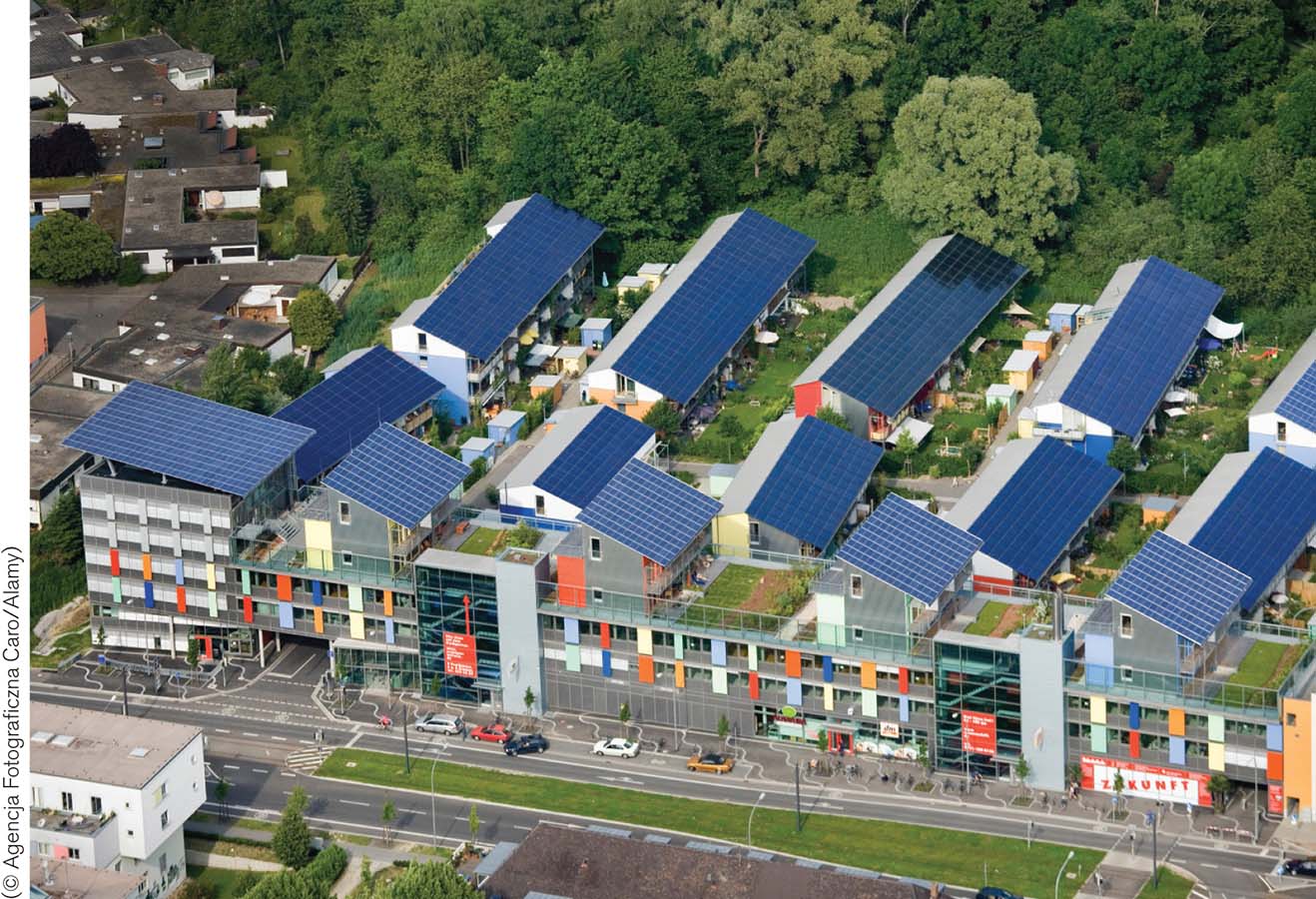10.8–10.11 Solutions
As we saw on the island of Samsø, it is possible to transition almost completely to renewable energy, but only with government incentives, technological improvements, and community buy-

However, there’s no “one size fits all” solution for transitioning to renewable energy. Different regions will embrace different approaches, depending on their costs and local geography. No matter what, a sustainable solution to our long-
10.8 Smart solutions to issues associated with solar power are under development
There are, as we have seen, several issues associated with developing large-
Producing Solar Power Day and Night

Has responding to the need to transition to renewable energy stimulated other technological revolutions? How so?
The Gemasolar plant in Seville, Spain, has 2,650 sun-
Water-Saving Solar Concentrating Power

Should solar system installations be excluded from wildlands until alternative, low-
Newer concentrating solar power plants in the southwestern United States use water-

Distributed Rooftop Generation
Another way to reduce water consumption by solar generation is to move from concentrating solar generation to photovoltaic generation. For example, in arid regions, energy developers are building utility-
One proposal to avoid damage to wildlife and valuable agricultural land is to install photovoltaic panels in already disturbed and developed areas (Figure 10.39). For instance, solar panels can be placed on agricultural land that has been damaged by salt buildup. In addition, the potential for generating electrical power on rooftops is enormous. Germany, with more than 43% of the world’s installed photovoltaic power in 2010 (mostly mounted on buildings), is the world leader in photovoltaic power generation (Figure 10.40).


In late 2011 the U.S. Department of Energy provided loan guarantees to support the installation of over 750 megawatts of additional photovoltaic generating capacity on approximately 750 roofs on large commercial buildings in 28 states. The project is intended as a model for further rooftop solar development in the United States. Recently, the city of Los Angeles identified nearly 5,000 hectares (12,000 acres) of suitable roof space in the city with the potential to support 5,500 megawatts (5.5 gigawatts, GW) of photovoltaic generating capacity. Because rooftop solar developments occur in the population centers that consume the energy generated, they also reduce the need for building high-
Policy Initiatives and Incentives
As with any new technology, there are often practical, legal, and economic barriers to overcome. With regard to developing photovoltaic (PV) systems, obstacles have included difficulty acquiring permits to connect to the electrical grid, gaining approval for financial assistance to install a PV system, and locating trained licensed contractors to install PV systems. In the United States, such hurdles have been partly overcome through the Renewable Portfolio Standard, or RPS, which requires electrical utility companies to obtain a certain percentage of their power from renewable energy.
For example, the RPS for New York State requires that investor-
Think About It
Could water-
saving solar technology actually make more water available for natural ecosystems in some circumstances? What does the extensive solar development in Germany, situated in northern Europe, suggest about the potential for solar energy development in a country like the United States or Australia?
Some rural electrical cooperatives resist high RPS requirements and do not encourage members to install their own photovoltaic systems. They argue that doing so would reduce demand for centrally generated power and, as a consequence, increase the cost of power to consumers. Argue for and against this position.